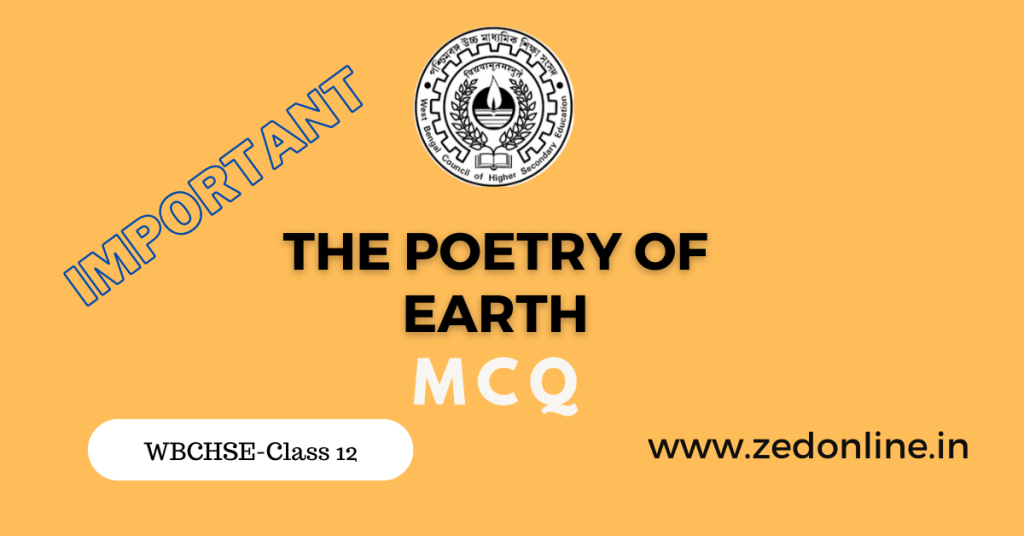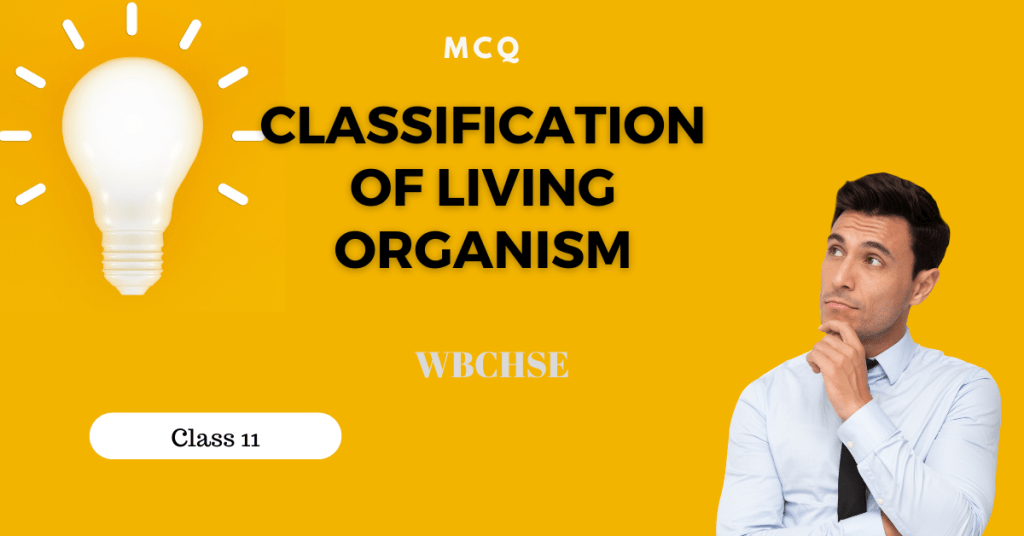Strong Roots MCQ for W.B H.S students are given below. Each Multiple Choice Question carries 1 marks.
Multiple Choice Questions (MCQ):
1.Essay “Strong roots” is taken from
a. Wings of fire
b. Ignited Mind.
c. Turning Points
d. My life: an illustrated Autobiography.
Ans: a. Wings of fire
2.Essay “Strong Roots” is written by—
a. AJC Bose
b. APJ Abdul Kalam
c. RK Narayan
d. Rabindranath Tagore
Ans :(b) APJ Abdul Kalam
3. APJ Abdul Kalam was born in —
a. Delhi
b. Pune
c. Rameswaram
d. Hyderabad
Ans: (c) Rameswaram
4. APJ Kalam was born in
a. Upper class family.
b. Lower class family.
c. Middle class family.
d. Very rich family.
Ans: (c) Middle class family.
5. Kalam began his career at—
a. Kanpur IIT
b. Delhi University
c. IIT Madras
d. Hindustan Aeronautics Limited
Ans :(d) Hindustan Aeronautics Limited
6. “ Strong Roots” is a/an—
a. autobiography
b. biography
c. travelogue
d. short story
Ans :(a) autobiography
7. According to Kalam “Strong Roots” refers to his—
a. religion
b. love for science
c. country
d. family background
Ans :(d) family background
8. Essay “Strong Roots” is an excerpt from—
a. My Father
b. My Childhood
c. Wings of Fire
d. Malgudi Days
Ans :(c) Wings of Fire
9.“…..the erstwhile Madras state ” suggests—
a. former Madras
b. recent Madras
c. outside Madras
d. Madras before Independence
Ans :(a) former Madras
10.“He possessed great innate wisdom” ,here the word ‘ he’ refers to —
a. Kalam’s mother
b. Kalam’s father
c.Kalam’s teacher
d. Kalam himself
Ans:(b) Kalam’s father
11. Kalam’s mother Ashiamma was his father’s ideal —
a. wife
b. guide
c .friend
d. helpmate
Ans :(d) helpmate
12. Ashiamma everyday fed—
a. all their relatives
b. her family
c. all their neighbours
d. outsiders with her own family
Ans :(d) outsiders with her own family
13.One of the forebears of Kalam’s mother was awarded by the British the title of—
a. Raibahadur
b. Bahadur
c. Padmashree
d. Bharat Ratna
Ans:(b) Bahadur
14.The house in which Kalam lived was built in the middle of the
a. 17th century
b. 19th century
c.20th century
d. 21st century
Ans :(b) 19th century
15. Kalam and his family lived in a large pucca house made of
a. cement and brick
b. cement and mud
c. mud and brick
d. limestone and brick
Ans :(d) limestone and brick
16. Kalam usually ate sitting on
a. a cot
b. the dining table
c. a chair
d. the kitchen floor
Ans:(d) the kitchen floor
17. His mother would serve him rice on a
a. plate
b. banana leaf
c. bowl
d. dish
Ans :(b) banana leaf
18. The Shiva Temple of Rameswaram was about
a. a ten-minute walk from Kalam’s ancestral house
b. a five-minute walk from his place of work
c. a five-minute walk from the Mosque Street
d. ten kilometers away from Kalam’s home
Ans : (a) a ten-minute walk from Kalam’s ancestral house.
19. The locality where Kalam lived was predominantly
a. Christian
b. Hindu
c. Muslim
d. Parsee
Ans : (c) Muslim
Also Read :
>>“Strong Roots” essay type questions and answers.
>>“Three Questions” essay type questions and answers.
>> “Asleep in the Valley” essay type questions and answers.
>> “The Proposal” MCQ.
20. Rameswaram was famous to pilgrims for the
a. Vishnu temple
b. Shiva temple
c. Jaganath temple
d. Kali temple
Ans :(b) Shiva temple.
21. How does Kalam describe his neighbourhood?
a. a predominantly Muslim locality close to the famous Shiva temple where Hindu families lived
amicably with their Muslim neighbours
b. an urban locality where all people lived in high-rise apartments near the Shiva temple
c. a predominantly Christian locality with very few Hindu families living on the fringes
d. a predominantly Hindu locality close to the famous Shiva temple where the Muslim population
was thinly spread.
Ans : (a) a predominantly Muslim locality close to the famous Shiva temple where Hindu families
lived amicably with their Muslim neighbours.
22.Kalam’s father was well-known in their locality as he was a
a. successful doctor b. respected teacher
c. wealthy moneylender
d. healer who prayed for the well being of his fellow men
Ans :(d) healer who prayed for the wellbeing of his fellow men.
23. Kalam’s father would take him to the mosque for
a. pre- dawn prayers
b. midday prayers
c. evening prayers
d. afternoon prayers
Ans :(c) evening prayers
24. The language in which the prayers were chanted in the mosque was
a. Persian
b. Urdu
c .Arabic
d. Tamil
Ans :(c) Arabic
25. Kalam’s father began his day at
a.4.P.M
b.5 A.M
c. 4 A.M
d. 6 A.M
Ans: (c) 4 A.M
26. Jainulabdeen was acknowledged as a spiritual person because
a. he was very knowledgeable about spiritual matters.
b. he worked at the local mosque
c. he read the namaz before dawn
d. the priest of the Rameswaram temple had discussions with
Ans : (a) he was very knowledgeable about spiritual matters him
27. People sat outside the mosque and waited for
a. the narrator
b. the Imam
c .Jainulabdeen
d. Ashiamma
Ans:(c) Jainulabdeen.
28. The water sanctified by Kalam’s father was carried home for
a. little children
b. young men
c. invalids
d. offering prayers
Ans :(c) invalids
29. What was the name of the high priest of Rameswaram temple ?
a. Pakshi Lakshmana Sastry
b. Rama Sastry
c. Jagat Sastry
d. Ramdas Sastry
Ans:(a) Pakshi Lakshmana Sastry
30. Kalam asked his father about the
a. effects of meditation
b. relevance of prayers
c. cosmos
d. Almighty
Ans:(b) relevance of prayer.
31. Kalam’s father believed that with prayer one transcends his body to become a part of
a. the cosmos
b. the universe
c. divine elements
d. the earth
Ans:(a) the cosmos
32.The complex spiritual concepts were conveyed by Kalam’s father in simple down to earth
a. Hindi
b. Bengali
c. Tamil
d. Telegu
Ans:(c) Tamil
33.The word ‘ introspection’ suggests
a. the process of self judgement
b. the process of judging others
c. the significance of the Gita
d. the method of reading religious books
Ans:(a) the process of self judgement.






